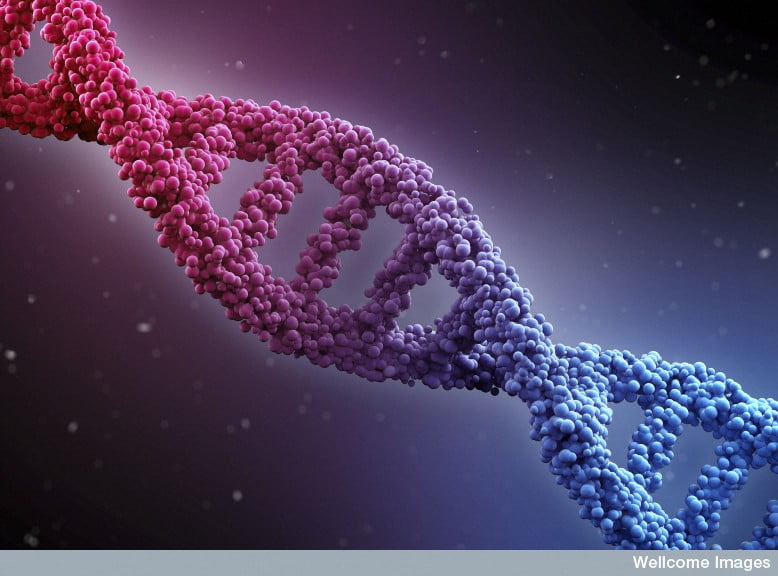A previously unrecognized genetic mutation causing a rare and devastating pediatric neurological disease – which has puzzled doctors around the world for years – was recently identified by Hadassah Medical Organization researchers in Israel.
The disease, which is characterized by a sudden onset of neurological deterioration in children, has now been identified as a new genetic disease caused by a single mutation. A previously healthy child, between the ages of three and seven, begins to experience a small motor problem. Suddenly, the child experiences rapid motor and cognitive decline. By the time the child is a teenager, he or she usually needs a caregiver around-the-clock.
Discovered by Israeli scientist Dr. Orly Elpeleg, the disease is still unnamed. According to Hadassah, it is the result of a mutation in a single gene in the ribosomal RNA, which is essential for protein synthesis in all living organisms. Its malfunction results in an excess of ribosomal RNA, so that the child’s cells are flooded with and poisoned by it.
“This is a very sad disease,” Elpeleg said in a statement. “Out of the blue, previously healthy children develop a slight limp, then forget a few words. They go from being children who are acting normally, developing at age level, to children who are severely challenged.”
Five years ago, there was a case of a three-year-old girl who had been healthy until she suddenly developed a slight limp. She soon lost her ability to speak, along with her cognitive abilities. She was seen at several medical centers in Israel, but they were stumped. At the same time, Hadassah‘s Elpeleg developed a cutting-edge, deep-sequencing technology that essentially amassed the largest genetic mapping database in Israel, with about 2’400 patients.
SEE ALSO: Israeli Surgeons Perform Rare In-Utero Heart Operation To Save Fetus’ Life
Using the new sequencing technology, Hadassah’s geneticists searched the database for defects that were similar to the one found in the girl’s genetic mapping. Hers matched with a nine-year-old boy who had been treated at Hadassah, but now lives in Russia. Hadassah’s pediatric neurologist Dr. Simon Edvardson flew to Russia, examined the boy, and took genetic samples, confirming that the illness was identical to the one suffered by this Israeli girl. “At this point, we realized that we had identified a new disease that didn’t appear in any medical texts or articles,” Elpeleg said in a statement.
SEE ALSO: Doctor Turns To Crowdfunding To Treat Three Year-Old Girl’s Rare Disease
Sign up for our free weekly newsletter
SubscribeComparing their data, the researchers found several more children around the world who shared an identical genetic defect and the same course of disease. To understand the mechanism of the newly identified disease, the researchers collaborated with Dr. George-Lucian Moldovan at Pennsylvania State University, who confirmed the disease mechanism: the production of excess RNA, which probably causes brain cells to be flooded and poisoned.
An altered gene causes the disorder
Then, Elpeleg collaborated with Hebrew University researchers to identify and study children from Canada, France, Israel, Russia, and the US who suffer from the disorder. The researchers found an identical, spontaneously occurring error in the same gene in all the patients tested, representing a difference of one letter among the roughly three billion letters that make up human DNA.
By finding the identical change in children who suffer from the identical clinical disease, the researchers determined that the altered gene is indeed the cause of the disease. “It’s the first time that an excess of ribosomal RNA has been linked to a disease in humans,” Elpeleg says.
Science may not be able to repair the gene yet, she says, but “it may be possible to identify the mutation early and, with future research, find ways to prevent the terrible deterioration.”
Elpeleg is the chief investigator and author of the study and head of Hadassah’s Department of Genetics and Metabolic Diseases. Her discovery is highlighted in the August 3, 2017, issue of The American Journal of Human Genetics.
Photos: Hadassah, Eloxx
Related posts

Israeli Medical Technologies That Could Change The World

Harnessing Our Own Bodies For Side Effect-Free Weight Loss

Missing Protein Could Unlock Treatment For Aggressive Lung Cancer






Facebook comments